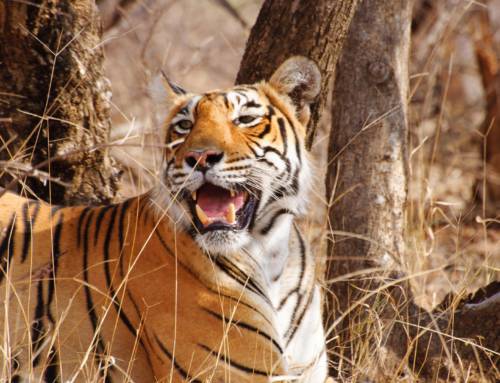Blog Author: Ishika Ramakrishna
Key Highlights:
- Globally, tropical forests are being lost and fragmented into smaller patches due to agricultural practices like maintaining areca, rubber and coffee plantations. These plantations are often close to forested areas, and are also home to some native plants outside of the main commodity, and these are called agroforests.
- Amphibians, which include frogs, toads and caecilians, are unique creatures found in many tropical rainforests, including our very own Western Ghats in southern India. This group of animals often contains many species which are endemic to a particular region, and vulnerable to extinction.
- The authors of this study examined how well these usually-picky amphibians have been doing in the agroforests of the Western Ghats. They did this by surveying an expansive landscape of 30,000 square kilometers in search of these creatures, and then comparing their findings across the various types of agroforests in the landscape. It seems that coffee agroforests house the most number of amphibians, but there’s much more to the story!
Frogs, toads, salamanders and caecilians (legless, snake-like creatures that live in the soil or water) are collectively called amphibians. These are small vertebrates that rely on moist, wet environments to survive. These fascinating animals breathe air and absorb moisture through their skin through special glands, and so they are most often found thriving in damp tropical rainforests. Although these are vibrant, curious creatures, over one-third of the world’s amphibians face the risk of extinction today. Due to their specific needs, amphibians are often endemic to their habitats, which means that certain species are found exclusively in a particular area. Losing the biodiversity from those areas could mean losing those species entirely! But why are we losing so much biodiversity from our forests?
These breathtaking rainforests have been undergoing changes for decades now, mostly at the hands of agriculture. This is one of the most prominent reasons for habitat loss across the world, but most acutely in pockets of tropical wilderness in places like South America and south Asia. Zooming into the Western Ghats of India, agroforests established for growing commodities like coffee, cashew and rubber have been replacing native forests over time. Wild animals, including amphibians, have been finding ways to survive in these agroforests. However, this is far from their ideal habitat! The authors of this study, Dr. Vishnupriya Sankararaman and others, dug deep to understand these landscapes in which amphibians are found.
This team of ecologists focused on 113 agroforests of central Western Ghats in Karnataka during the monsoon months of 2013 and 2014, as that is the season when amphibians are the most active. They walked across this landscape – crossing roads, cultivated areas and even water bodies – in search of amphibians. They noted down each species of frog or toad they encountered, either by observing them directly or hearing their calls. Even though it can be incredibly challenging to identify all the cryptic species of amphibians out there, the team managed to identify most of the individuals detected, which amounted to 26 species from over twelve thousand individuals across the study area. With this information, the authors examined how many species of amphibians were present in each kind of agroforest (species richness), how different this richness was across each agroforest (beta diversity) and how these species influence each other in these landscapes (dominance).

A Malabar Gliding Frog, one of the frogs observed during the study.
Through this study, the authors discovered that coffee plantations had the highest species richness, as compared to areca and rubber plantations. Rubber plantations seemed to house similar species across the landscape, while each areca plantation seemed to host a varied array of amphibians. The species composition was similar between areca and rubber, with coffee housing a slightly different set of species from the others. This kind of information can be valuable in understanding which agroforests can come closest to providing amphibians with their natural habitat. However, at a more local scale, amphibians were most likely to be found near water bodies and roads. If an agroforest was unpaved with minimal thoroughfare or traffic, they proved to be beneficial oases of habitat for the little vertebrates.
In today’s world, the expansion and intensification of agriculture is unavoidable. What we can do, though, is work towards finding agricultural practices that can support biodiversity and conservation needs. This study showed us how coffee plantations have the potential to provide people with reliable income, and animals with sufficient habitat. Studies like these, which are situated in biodiversity hotspots, can help inform management strategies that can preserve habitats appropriately and sustain the incredible wildlife that they currently house. Who knew the little frogs of Karnataka could teach us so much about conservation?





